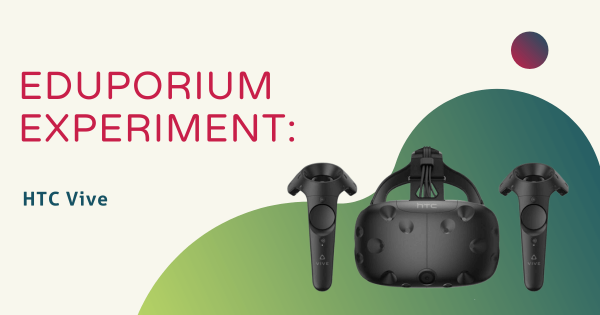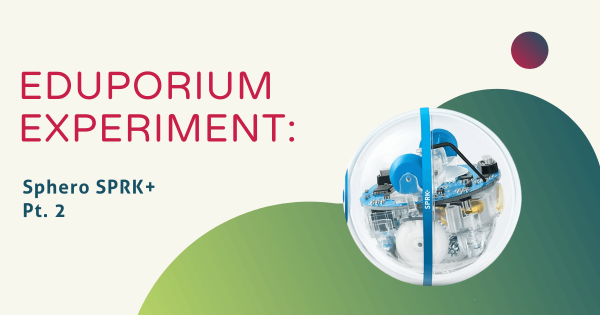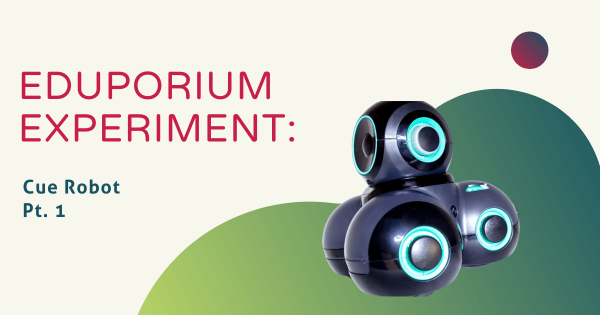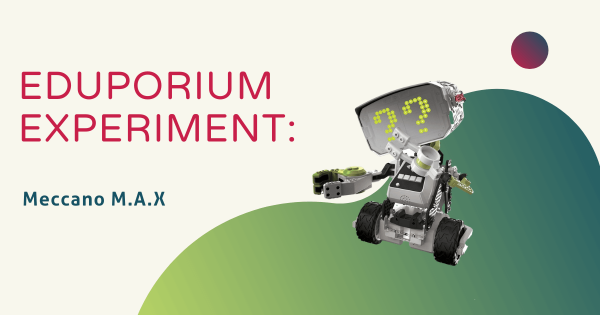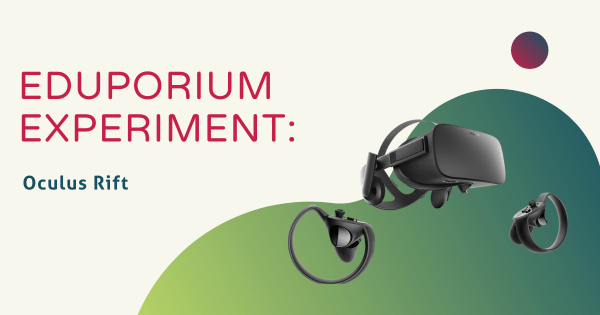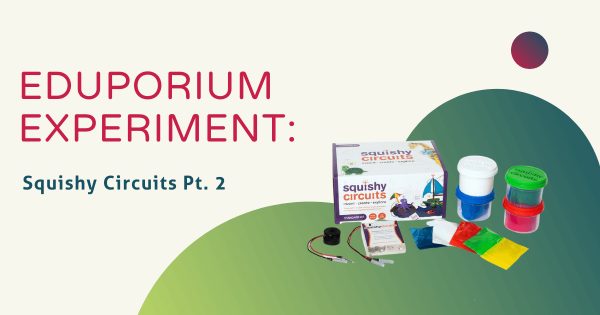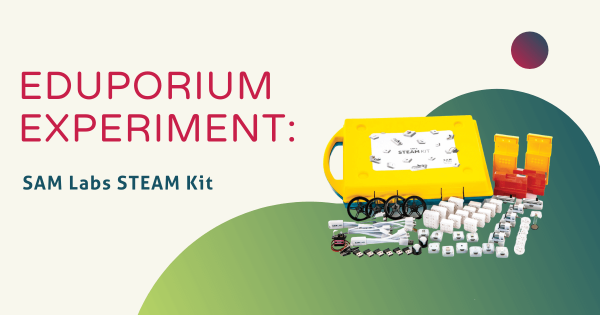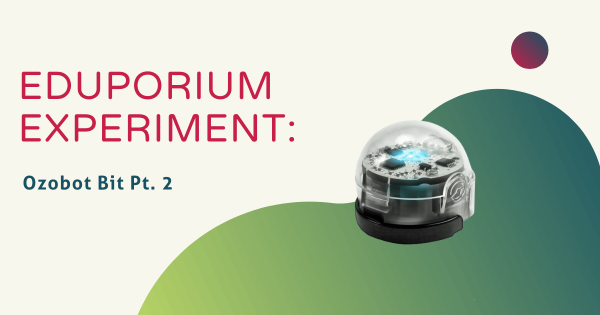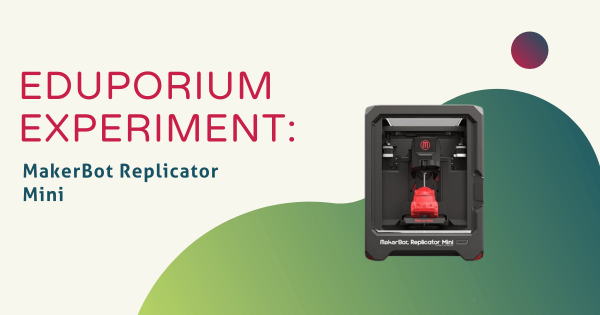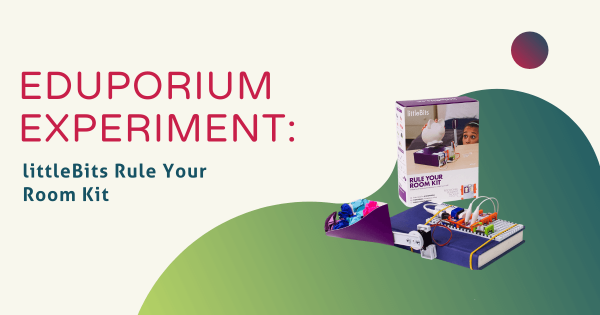VR is making its way into the educational sphere, empowering students to explore previously unreachable destinations and interact directly with virtual objects. A few weeks ago, I experimented with the Oculus Rift virtual reality system, and this time I got to try out the HTC Vive—just another perk of working at Eduporium!
Eduporium Experiment
Our Eduporium Experiment series is one of our longest running blogs. Whenever we add new STEAM solutions to our store, we try it out so we can learn all about it. Over the years, we've covered dozens of top STEAM teaching tools, offering our first-hand insights and tidbits for educators. We believe this content gives K–12 teachers valuable information when it comes to using various STEAM solutions with their students. Our team analyzes products from different points of view and even considers implementation strategies in different educational environments. Whether it's most useful in the makerspace, library, or in the general classroom, we're happy to continue providing these helpful guides. You'll even find classroom-ready STEAM projects to try with your students. Browse through the posts or use the search bar on the left to find exactly what you're looking for.
In each 'experiment,' we provide key background information on the STEAM tool being featured. From there, we explore an actual project. This allows us to discover subtle tricks and hints that are extremely helpful for educators to know. Whether it's a coding tool, educational robotics solution, or even an engineering kit, we do our best to cover everything educators are investigating. As the Eduporium Experiment series has expanded, we've come a pretty long way. Now, you can find dozens of helpful articles that may include step-by-step project guides, troubleshooting suggestions, and even our thoughts on what makes each STEAM tool worthwhile for 21st century students. Find our insights on integrating STEM tools like the Bee–Bot, Finch 2.0, Ozobot Evo, micro:bit V2, and so many more!
-
Eduporium Experiment | Sphero SPRK+ Pt. 2
The SPRK+ is one of Sphero’s latest additions to their seriously cool line of robots. Although only the size of a baseball, it is packed with educational power. When paired with the Sphero Edu app, the opportunities for learning are boundless. Kids have the option to write code in either a Blockly or path drawing environment. -
Eduporium Experiment | Cue Robot Pt. 1
There’s no shortage of interactive surprises with this cool new robot. Designed for children aged 11 and up, the Cue is ideal for introducing artificial intelligence and helping kids advance their coding skills. With this inviting robot and the Cue app from Wonder Workshop, students play games, chat, control, and program the Cue in Blockly or JavaScript. -
Eduporium Experiment | Meccano M.A.X
The Meccano M.A.X is not only programmed to respond to certain commands, but it can also learn from kids and build knowledge about their interactions with its incredible AI technology. Students even get exposure to engineering as they build M.A.X from scratch and then teach it new behaviors, skills, and tricks using voice commands. -
Eduporium Experiment | Oculus Rift
Ready for an adventure though the human bloodstream? Through the White House? To space? VR makes these thrilling adventures possible. In our office, we have both the Oculus Rift and HTC Vive and today, I experimented with the Oculus. I had only ever used VR while sitting down before—certainly never standing and with touch controllers. -
Eduporium Experiment | Squishy Circuits Pt. 2
These cool kits are designed for play-based learning! By building a number of experiments, students can learn various circuitry basics and experiment with conductive and insulating dough, LEDs, and other accessories. Using the Squishy Circuits kits, they’re also able to get hands-on while they learn about conductivity, simple circuits, series, and parallel circuits. -
Eduporium Experiment | Ozobot Bit Pt. 2
Although intended for kids aged 6-10, the original version of the Ozobot can help teach students of all ages thanks to its versatility and the range of different things children can do with it. Beginner students can start by experimenting with color coding using easy-to-understand OzoCodes and then build their way up to using OzoBlockly. -
Eduporium Experiment | MakerBot Replicator Mini
If you’re looking for a small, easy-to-use, but high-quality 3D printer, the MakerBot Replicator Mini is for you. Before this experiment, I had very little 3D printing experience. I assumed they were all too complicated and sophisticated, so I was amazed by the simplicity that comes along with the MakerBot Mini. -
Eduporium Experiment | littleBits Rule Your Room Kit
The littleBits Rule Your Room Kit is one of littleBits’ newest kits and it’s nothing short of awesome. If you’re familiar with littleBits already, you are more than welcome to skip to the next paragraph! So what are littleBits!? They are easy-to-use electronic building blocks that are magnetic and color-coded by function.




